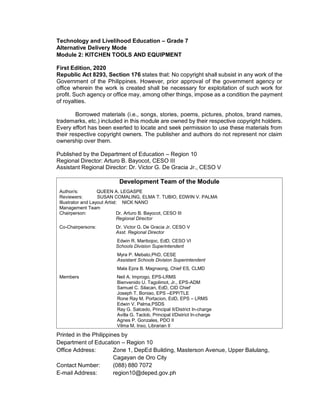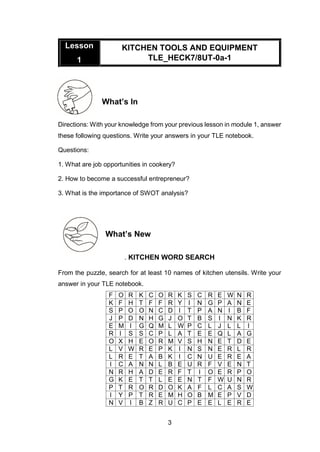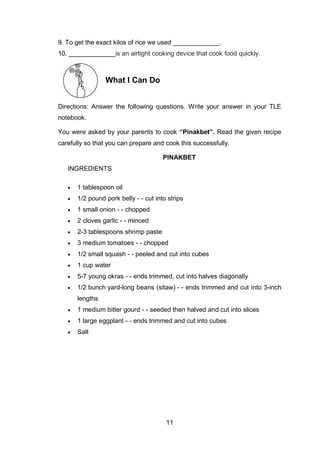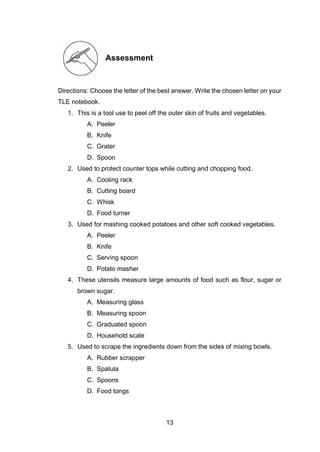This document provides information about a cookery module that is part of a Technology and Livelihood Education program in the Philippines. It discusses kitchen tools and equipment. The module was created by the Department of Education of the Philippines and provides learning material as an alternative delivery mode for students. It includes sections on what students need to know, what they already know, the lesson, activities for practice and demonstration of learning, and references. The document lists the authors and reviewers of the module and provides publishing details.























